
Henry Clay Sr. was an American attorney and statesman who represented Kentucky in both the U.S. Senate and House of Representatives. He was the seventh House speaker as well as the ninth secretary of state. He unsuccessfully ran for president in the 1824, 1832, and 1844 elections. He helped found both the National Republican Party and the Whig Party. For his role in defusing sectional crises, he earned the appellation of the "Great Compromiser" and was part of the "Great Triumvirate" of Congressmen, alongside fellow Whig Daniel Webster and John C. Calhoun.

John Pope was a United States Senator from Kentucky, a member of the United States House of Representatives from Kentucky, Secretary of State of Kentucky, and the third Governor of Arkansas Territory.

William Branch Giles was an American statesman, long-term Senator from Virginia, and the 24th Governor of Virginia. He served in the House of Representatives from 1790 to 1798 and again from 1801 to 1803; in between, he was a member of the Virginia House of Delegates, and was an Elector for Jefferson in 1800. He served as a United States Senator from 1804 to 1815, and then served briefly in the House of Delegates again. After a time in private life, he joined the opposition to John Quincy Adams and Henry Clay, in 1824; he ran for the Senate again in 1825, and was defeated, but appointed Governor for 3 one-year terms in 1827; he was succeeded by John Floyd, in the year of his death.

Ashland Park is a historic early 20th century neighborhood in Lexington, Kentucky, United States. It was named after Ashland, the estate of Kentucky statesman Henry Clay which is located in the eastern portion of the neighborhood. The 600-acre (2.4 km2) development was designed by the famous landscape architecture firm the Olmsted Brothers of Massachusetts. The neighborhood belongs to the National Register of Historic Places.
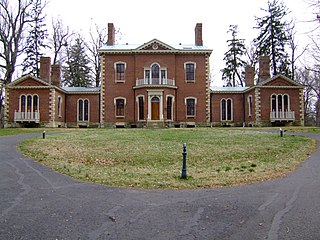
Ashland is the name of the plantation of the 19th-century Kentucky statesman Henry Clay, located in Lexington, Kentucky, in the central Bluegrass region of the state. The buildings were built by enslaved African Americans, and enslaved people grew and harvested hemp, farmed livestock, and cooked and cleaned for the Clays.

Waveland State Historic Site, also known as the Joseph Bryan House, in Lexington, Kentucky is the site of a Greek Revival home and 10 acres now maintained and operated as part of the Kentucky state park system. It was the home of the Joseph Bryan family, their descendants and the people they enslaved in the nineteenth century. Bryan's father William had befriended Daniel Boone and they migrated west through the Cumberland Gap.

Richard Hawes Jr. was a United States representative from Kentucky and the second Confederate Governor of Kentucky. He was part of the politically influential Hawes family. His brother, uncle, and cousin also served as U.S. Representatives, and his grandson Harry B. Hawes was a member of the United States Senate. He was a slaveholder.

James Clark was a 19th-century American politician who served in all three branches of Kentucky's government and in the U.S. House of Representatives. His political career began in the Kentucky House of Representatives in 1807. In 1810, he was appointed to the Kentucky Court of Appeals, where he served for two years before resigning to pursue a seat in the U.S. House of Representatives. He served two terms in that body, resigning in 1816.

Gratz Park is a neighborhood and historic district located just north of downtown Lexington, Kentucky. It was named after early Lexington businessman Benjamin Gratz whose home stands on the corner of Mill and New streets at the edge of Gratz Park. The Gratz Park Historic District consists of 16 contributing buildings including the Hunt-Morgan House, the Bodley-Bullock House, the original Carnegie Library in Lexington, and several other private residences. Gratz Park occupies a tract of land that was established in 1781 outside the original boundaries of Lexington.
Washington is a neighborhood of the city of Maysville located near the Ohio River in Mason County in the U.S. state of Kentucky. It is one of the earliest settlements in Kentucky and also one of the earliest American settlements west of the Appalachian Mountains. It played a significant role in the lead-up to the Civil War, producing two civil war generals and an escaped slave whose legal case established Canada as a safe haven for escaping slaves. It also provided the site where Harriet Beecher Stowe witnessed a slave auction. It has since been annexed by Maysville, and is sometimes now referred to as Old Washington. The community is in Area 606 served by the 759 exchange.
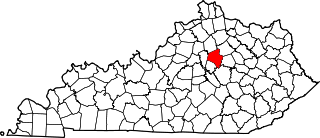
This is a list of the National Register of Historic Places listings in Fayette County, Kentucky.

Ebenezer Presbyterian Church is located near Keene, Kentucky in Jessamine County, Kentucky, United States. The first Ebenezer Church on the site was organized by Presbyterian minister Adam Rankin around 1790. The first church building, a log structure, was replaced by a stone building in 1803.
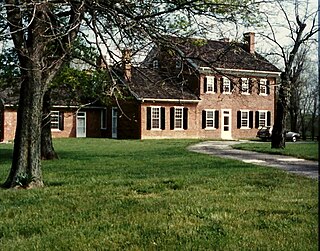
Hurricane Hall was built in the 1790s in Fayette County, Kentucky by David Laughed on the Lexington-Georgetown Pike in what is now a part of Lexington. Architecture historian Clay Lancaster describes it as "the most engaging residence in Fayette County". The home is included in the National Register of Historic Places listings in Fayette County, Kentucky.
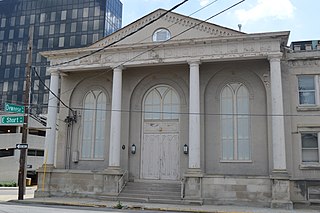
First African Baptist Church is a Baptist church at 264-272 E. Short Street in Lexington, Kentucky. The congregation was founded c. 1790 by Peter Durrett and his wife, slaves who came to Kentucky with their master, Rev. Joseph Craig, in 1781 with "The Travelling Church" of Baptists from Spotsylvania, Virginia.
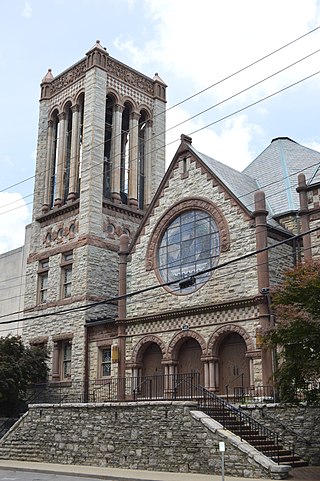
The Central Christian Church in Lexington, Kentucky, is a historic church at 207 E. Short Street, and an active congregation of the Christian Church. The church was founded by Barton Stone and was the place where the Stone and Campbell movements united to form in 1832 as part of the Restoration Movement. The church was previously known as Hill Street Christian Church and Main Street Christian Church.
The Dr. Henry Clay House near Paris, Kentucky was listed on the National Register of Historic Places in 1982.

The William L. Hurst Law Office, on N. Washington Street in Campton, Kentucky, is a historic brick building built around 1887. It was listed on the National Register of Historic Places in 1993.
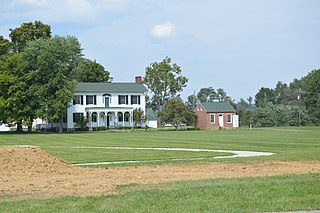
The McConnell House, Law Office, and Slave Quarters, near Wurtland, Kentucky, was listed on the National Register of Historic Places in 1975. The listing included three contributing buildings and a contributing site on 15 acres (6.1 ha).
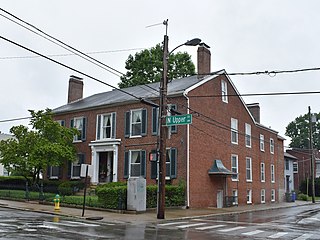
The Abraham Barton House in Lexington, Kentucky, is a 2+1⁄2-story Greek Revival structure dating from 1795. The house was constructed in multiple stages, and the original dwelling faced Second Street. Architect Gideon Shryock is credited both for the Greek Revival expansion and remodel in the early 1830s and for changing the front exposure to face North Upper Street. The House was added to the National Register of Historic Places in 1977.



















